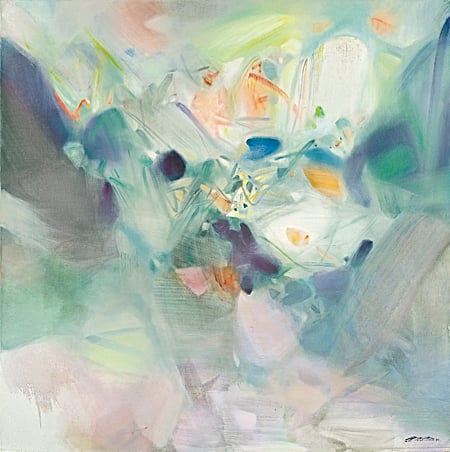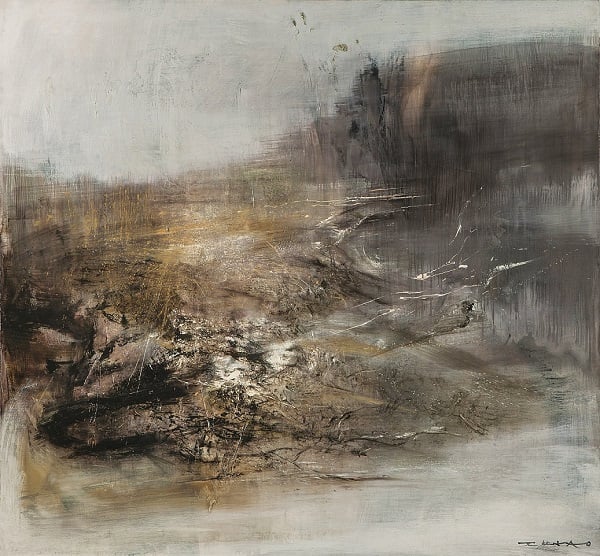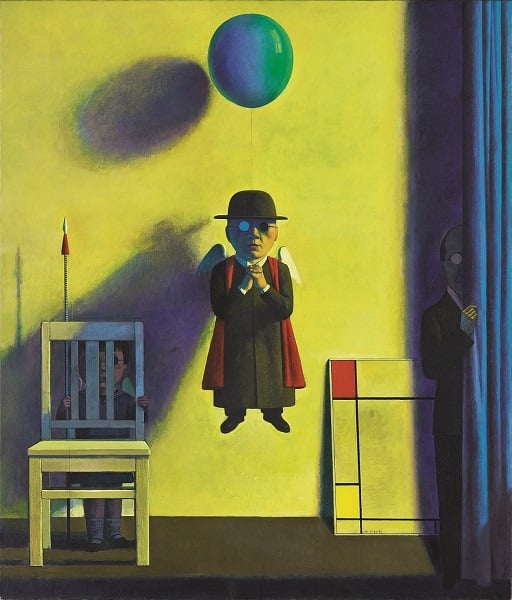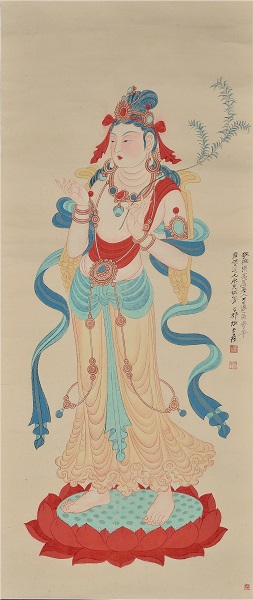Auctions
Fall Auction Season in Hong Kong
This weekend marks the start of Hong Kong's 2013 autumn auction season.

This weekend marks the start of Hong Kong's 2013 autumn auction season.


Chu Teh-Chun, Songe de l’aube, 1991, oil on canvas, sold at Poly Auction Hong Kong
1990–1991 was a year of transition and breakthrough for Chu Teh-chun (Chinese/French, b.1920), who moved toward a new stage, both personally and artistically. In 1990, the artist moved into a new studio, situated at Vitry-sur-Seine in Paris. After moving into this bright, spacious studio, Chu’s work underwent an expansion in size and a change in style. This stylistic transition was further accelerated after the artist’s trip to Venice, Italy in mid-spring, 1991, where he was inspired by the painters of the Venetian school, including Titian (Italian, ca.1485–1576) and Vittore Carpaccio (Italian, 1465–1525). Songe de l’aube was among the first works in Chu’s new series that bore witness to the artist’s exploration of a new form of expression and the art of color. This painting was sold at auction after more than 20 years in a private collection.

Zao Wou-Ki, 5.11.64, 1964, oil on canvas, sold at Poly Auction Hong Kong
Zao Wou-Ki (Chinese/French, 1921–2013) has said, “I began working in oils in 1935, but it wasn’t until 1964—a full thirty years—that I truly understood the freest way to paint in oils.” 1964 was a time of peak maturity in Zao’s creative career. In his innovative work, 5.11.64, Zao created a highly unusual composition using liubai, a technique in which large areas of the canvas are left blank, and which emphasized the artist’s achievements in spatial awareness. When considered in relation to painterly traditions in both the East and West, Zao’s color, formal elements, and structuring of space created new breakthroughs and possibilities, even as they preserved and carried those traditions forward. Here, Zao can truly be said to be bridging past and future in both his creative concept and technique. In this sense, 5.11.64 can be regarded as an important work, representative of an important creative thread that runs throughout Zao’s art.

Liu Ye, Composition of red, yellow, and blue, 1997, oil on canvas, sold at Poly Auction Hong Kong
Composition of red, yellow, and blue by Liu Ye (Chinese, b.1964) is a work from the artist’s early career, completed after his return to China from Germany. Created in 1997, it was exhibited in Liu’s first solo exhibition in China. This painting represents the epitome of Liu’s creative work in Germany, and hints at the innovation associated with his later career. It serves the purpose of both summarizing and inheriting the past while also passing it on. This painting has resurfaced—a rare occurrence for this artwork—as part of Poly Auction Hong Kong’s Chinese Modern and Contemporary Art sale.

Fu Baoshi, Returning home amid rain, 1944, ink and color on paper, on hanging scroll, sold at Poly Auction Hong Kong
Fu Baoshi (Chinese, 1904–1965) started painting rainy landscapes in the 1940s, inspired by the climate of the Sichuan Mountains. Fu is known as “the master of rainy landscape.” When the artist lived in refuge in the western suburb of Jingangpo, in Chongqing, he always encountered rain on his way home. Whenever there was rain, the mountain was surrounded by a haze of mist. This scenery inspired the artist to paint with ink, gradually evolving his style. Since then, Fu has continued to render this scenery in his paintings, whether it is Sichuan’s stormy weather or the Southern drizzle.
Returning home amid rain, completed in 1944, is an imitation of a painting by Jin Nong (Chinese, 1687–1764) of the same name, from the collection of Xu Beihong (Chinese, 1895–1953). Fu taught at Central University in Shapingba where Xu served as president, which meant that the artist had the opportunity to view the masterpiece in person. Within months after viewing the work, Fu’s interests had shifted toward rainy landscapes. This piece ranks among the best that were created by the artist.

Zhang Daqian, Bodhisattava, ink and color on paper, on hanging scroll, sold at Poly Auction Hong Kong
Zhang Daqian (Chinese, 1899–1983) was a highly successful Figurative artist, whose works were acclaimed as “Zhang Meiren” (Beauties by Zhang). His portraits of women, painted during his early career, followed in the style of traditional artists such as Fei Danxu (Chinese, 1802–1850). This style is characterized by soft, delicate portrayals of wistful beauties and court ladies. In 1937, when Japanese forces occupied Beijing, Zhang was forced to flee to Sichuan. In the 1940s, he traveled to Dunhuang, an important landmark on the Silk Road, and the location of the famous Mogao Grotto murals. He spent two years studying the murals of the Wei, Jin, and Tang dynasties, which encouraged him to make a fundamental shift in his own style: from the commonly accepted wistfulness of ladies to graceful, robust, and handsome depictions. The murals from Dunhuang are known for their emphasis on the extravagant yet exquisite hues of mineral blue, mineral green, and cinnabar. Zhang used these hues as well, and thus imbued his beauties with a rhythmic and energetic presence.
The painting entitled Bodhisattava is undated, but it is believed to have been created around 1942 due to its compositional similarity to Baimiao Guanyin (Bodhisattva in Monochrome), his study of the mural by Tang dynasty artists in one of the caves of the Mogao Grottoes. The Bodhisattva has rounded facial features, and holds a willow branch in her hand. She stands on a lotus throne with a posture resembling an inverted “S,” and is surrounded by flowing tassels and garments. The painting boasts balanced outlines and harmonious tones, which Zhang bestowed upon the work as a symbol of his spiritual dedication.
Other highlights of the season include a group of important Gongbi (elaborate-style) paintings by artists such as Qin Ai, Hao Liang, Xu Hualing, and Li Huayi. This sale of Chinese Contemporary ink paintings by Poly Auction Hong Kong will go under hammer on October 5, 2013, at the Grand Hyatt Hotel (Wanchai), Hong Kong.
Click here for more information on Poly Auction Hong Kong and its upcoming sales.